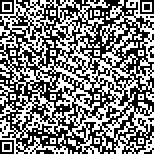| 摘要: |
| [摘要] 目的 观察胸腺肽联合GP方案治疗晚期非小细胞肺癌的临床疗效、安全性及对免疫功能的影响。方法 将114例晚期非小细胞肺癌的患者分为对照组61例和观察组53例。对照组予吉西他滨1 000 mg·m-2静滴,D1、D8联合顺铂75 mg·m-2静滴,21 d为1个周期。观察组在对照组基础上,予胸腺肽注射液20 mg,皮下注射,隔日一次随化疗连续应用2个周期。观察两个周期化疗结束后患者的近期临床疗效、不良反应及T淋巴细胞亚群的变化。结果 观察组临床获益率(86.79%)高于对照组(80.32%)(P<0.05)。观察组客观有效率(37.73%)略高于对照组(32.79%),但差异无统计学意义(P>0.05)。观察组血清T淋巴细胞亚群CD3+、CD4+、CD8+和NK细胞计数值明显升高,CD4+/CD8+明显降低(P<0.05)。其临床主要不良反应为血液学毒性和胃肠道反应,观察组化疗后Ⅲ+Ⅳ°白细胞计数、血小板计数减少发生率明显低于对照组(P<0.05),胃肠道反应、肝肾功能等其他不良反应两组间差异无统计学意义(P>0.05)。结论 胸腺肽联合GP方案治疗晚期非小细胞肺癌临床疗效良好,能有效提高患者T淋巴细胞亚群水平,降低化疗相关不良反应发生率,提高患者耐受性,临床可进一步研究推广。 |
| 关键词: 胸腺肽 非小细胞肺癌 GP方案 临床疗效 免疫功能 |
| DOI:10.3969/j.issn.1674-3806.2018.09.06 |
| 分类号:R 97 |
| 基金项目:广西壮族自治区食品药品监督管理局2016年食品药品安全科研项目(编号:区直自选0018);广西卫计委科研课题(编号:Z2016610) |
|
| Clinical research of thymosin combined with GP regimen in treatment of advanced non-small-cell lung cancer |
|
LAN Bi-quan, ZHANG Hua-jun, YANG Di-hong, et al.
|
|
The First Department of Chemotherapy, the People′s Hospital of Guangxi Zhuang Autonomous Region, Nanning 530021, China
|
| Abstract: |
| [Abstract] Objective To evaluate the effects of thymosin combined with GP regimen on clinical outcome, safety and immune function in treatment of advanced non-small-cell lung cancer(NSCLC). Methods One hundred and fourteen patients with advanced NSCLC were included in this study and randomly divided into control group(n=61) and treatment group(n=53). The patients in the control group were treated with chemotherapy of gemcitabine 1 000 mg·m-2, day 1, 8+cisplatinum 75 mg·m-2, twenty-one per cycle. The patients in the treatment group received the same treatment as the control group plus thymosin injection 20 mg qod for 2 cycles of the chemotherapy regime. The clinical efficacy, chemotherapy-related toxicities and the changes of T lymphocyte subsets were compared between the two groups after two cycles of the chemotherapy regime. Results The clinical benefit rate of the treatment group(86.79%) was significantly higher than that of the control group(P<0.05). The objective response rate(CBR) of the treatment group(37.73%) was slightly higher than that of the control group(32.79%)(P>0.05). T-lymphocyte cell subsets of CD3+, CD4+ and CD8+ and NK cells in the treatment group were significantly higher than those in the control group(P<0.05). CD4+/CD8+ in the treatment group was significantly higher than that in the control group(P<0.05). Hematologic toxicities and gastrointestinal responses were the main adverse reactions. The incidence rates of Ⅲ+Ⅳ° leukopenia and thrombocytopenia in the treatment group were significantly lower than those in the control group(P<0.05). There were no significant differences in adverse reactions including gastrointestinal reactions and abnormal hepatic and renal functions between the two groups(P>0.05). Conclusion Thymosin combined with GP regimen is effective in treatment of advanced non-small-cell lung cancer. It can elevate the level of T lymphocyte subsets, reduce the chemotherapy-related toxicities and enhance the patients′ tolerance to chemotherapy. |
| Key words: Thymosin Non-small-cell lung cancer(NSCLC) GP regimen Clinical efficacy Immune function |

